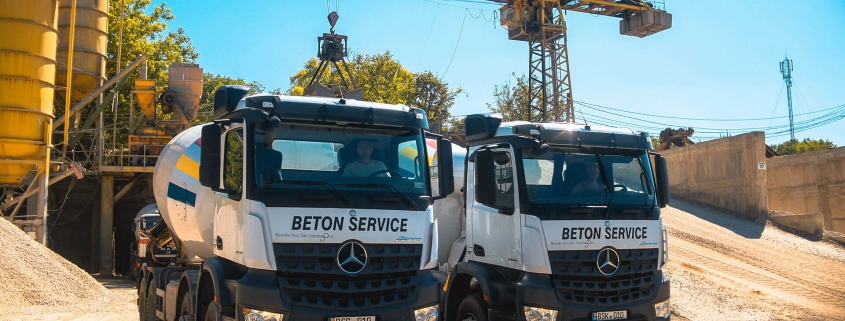PRACTICAL TIPS FOR CONCRETE POURING
Optimal conditions for pouring concrete:
- Ordinary concretes can be poured at a temperature between 5 and 30 degrees Celsius, ensuring all the necessary measures for their treatment, mainly against water loss by evaporating it from the composition;
- If the temperatures during the day exceed 30 degrees Celsius, it is recommended to pour the concrete in the evening or at night, to prevent the rapid evaporation of water as well as possible.
- Also, during the night, the optimum temperature must be maintained between 5 and 7 degrees Celsius. If the outside temperature drops below 5 degrees Celsius (in winter), you must take some measures to protect the concrete from the cold.
How to pour concrete:
- The concrete must be poured from a maximum height of 60 cm and in no case should it be shoveled because, in some places, the concrete will not bind and will not be homogeneous.
- You do not have to add extra water if you think the concrete is too thick. The concrete will become porous and less resistant. Any deviation from the concrete recipe will affect the quality and durability of the final work.
- For structural elements with thick reinforcements (diaphragm walls, columns or beams) you can request from the concrete manufacturer the addition of a plasticizer to obtain a more fluid concrete with which you can work more easily.
Concrete vibration:
- The drying time of the concrete varies depending on the outside temperature, dosage, the type of cement and additives.
- After pouring, it is necessary to vibrate the concrete. Vibration increases the degree of compaction, the process being very helpful for distributing concrete in harder to reach places.
- The duration of the concrete vibration is between 5 and 30 seconds. You will know that the vibration is completed when the concrete surface is uniform, slightly shiny and no air bubbles appear on the surface.
- Leveling of concrete surfaces must be done as soon as possible after pouring, recommended in the first two hours. After this interval the concrete begins to harden.
Concrete vibration methods:
- Internal vibration – is done with a vibrator with an elongated shape (lance or bubble) which is inserted into the concrete mass. It is used for resistance structures (beams, pillars, diaphragm walls, erasers, etc.).
- External vibration – is made with electric vibrators for form work, which is attached to their exterior. It is used for prefabricated elements (beams, tiles, curbs, fence boards)
- Surface vibration – is done with a vibrating ruler / beam that has attached a vibration mechanism that comes in contact with the concrete surface, while it is moved on it. It is used for concrete slabs and floors
- The appearance of cracks during the hardening of the concrete can be prevented by treating the surfaces exposed directly to the sun rays by periodic spraying with water, minimum 3 days, or with a specialized protection solution. Both processes must be applied as soon as the concrete surface is sanded.
These procedures will prevent the accelerated evaporation of water from the freshly poured concrete mixture and also contribute to a more efficient hydration of the cement.



